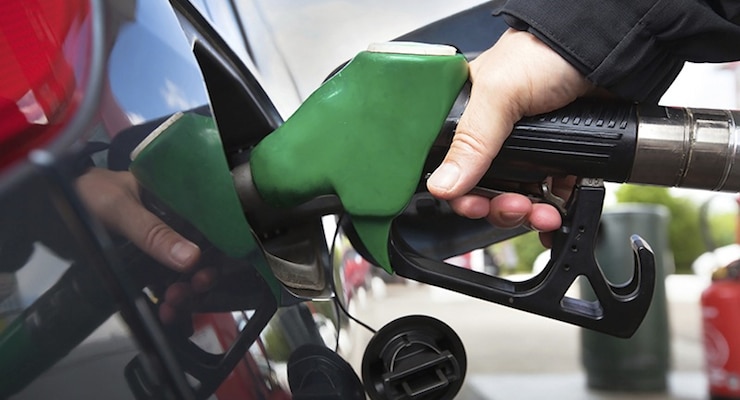

Consumer Price Index (CPI) reporting on gas prices from the Labor Department.
The Labor Department’s consumer price index (CPI) fell to a seasonally-adjusted 0.3% last month, the first one-month decrease since February 2016. A 6.2% drop in the gasoline index weighed the most, while spending on food at home rose 0.5% during the period.
Energy prices fell 3.2% for the month, But excluding the volatile food and energy components, the so-called core CPI still slipped 0.1%, versus to a 0.2% expected gain.
Compared to last year, prices rose 2.4%, but still missed their 2.6% target. That’s the smallest 12-month increase since November 2015, a sign that inflation pressures may be cooling. The personal consumption expenditures (PCE) index–which is the gauge the Federal Reserve uses to follow inflation–rose 2.1% in February from the prior year, the first time in nearly five years it surpassed the central bank’s 2% target.
Chris Christopher, who lowered his first-quarter economic growth outlook to 1% from 1.3% after CPI and retail sales, said the sluggish consumer spending in the first three months of this year is likely temporary.
“Healthy gains in employment, real disposable income, and household wealth will continue to fuel consumer spending,” Mr. Christopher said, noting that IHS Markit forecasts real consumption growth to hit a 2.7% to 3.1% annual rate for the remainder of 2017.
Still, the Atlanta Fed revised its first-quarter GDP forecast lower from 1.0% to 0.5%.
The most damning journalistic sin committed by the media during the era of Russia collusion…
The first ecological study finds mask mandates were not effective at slowing the spread of…
On "What Are the Odds?" Monday, Robert Barnes and Rich Baris note how big tech…
On "What Are the Odds?" Monday, Robert Barnes and Rich Baris discuss why America First…
Personal income fell $1,516.6 billion (7.1%) in February, roughly the consensus forecast, while consumer spending…
Research finds those previously infected by or vaccinated against SARS-CoV-2 are not at risk of…
This website uses cookies.